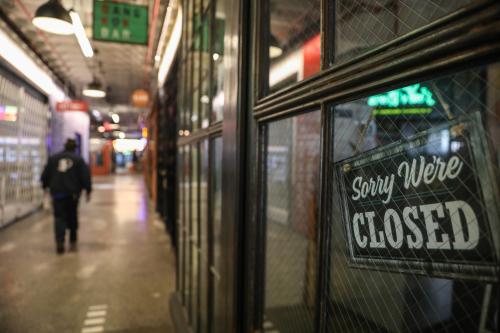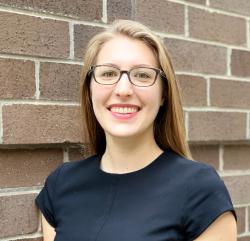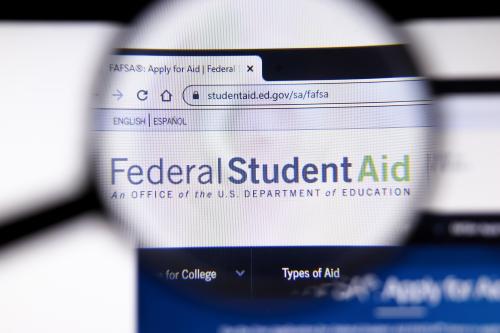If you want more content like this, subscribe to our newsletter.
This week in Class Notes:
-
- The Texas Top Ten Percent rule increased equity and economic efficiency.
- There are big gaps in U.S. early-life mortality rates by family structure.
- Locally-concentrated income shocks can persistently change the distribution of poverty within a city.
- Our top chart shows how income inequality changed in the United States between 2007 and 2016.
- Tammy Kim describes the effect of the COVID-19 epidemic on low-wage workers.
- Finally, check out Isabel Sawhill’s new piece on how COVID-19 poses the biggest threat to the middle class since the 1930s.
Winners and losers? The effect of gaining and losing access to selective colleges on education and labor market outcomes
Selective college admissions are fundamentally a question of tradeoffs: Given capacity, admitting one student means rejecting another. Assessing an admissions policy change requires understanding both the effect of attending the selective college on students admitted under the policy and the effect on the students who are displaced. In this paper, Black et al. utilize the introduction of the Texas Top Ten Percent rule (TTP)—a policy that guaranteed admission to any Texas public university to anyone in the top 10% of their high school class in Texas—to identify the effect of access on student graduation and earnings outcomes. “Pulled in” students—highly ranked students at schools that previously sent few students to the flagship—gained access to selective institutions under TTP, with increased enrollment at the flagship campus. Black et al. show that this was not just a reallocation across campuses; many “pulled in” students would not have attended college absent the policy. This shift also significantly increased the share of students who earned BAs. In contrast, “pushed out” students—students outside the top tier at “feeder” schools—lost access to selective schools, but did not see declines in overall enrollment, graduation, or earnings. The TTP rule, then, seems to have improved economic efficiency.
Family structure and early life mortality in the United States
Families protect the health of their members through economic, social, and psychological resources, but little attention has been paid to the relationship between family structure and early life mortality (1–24 years of age). In this study, Rogers et al. document mortality risk across time for U.S. children in different family structures. The authors find significant disparities in early-life mortality by family structure. Compared to children living in married‐parent families, children living with single fathers experienced 47% higher risk of death, while children living with one or more parents and one or more grandparents experienced 54% higher risk of death. These elevated mortality risks were attenuated but persisted after controlling for the effect of socioeconomic status, health, and disability among family members on mortality rates.
Loss in the time of cholera: Long-run impact of a disease epidemic on the urban landscape
How do geographically-concentrated income shocks affect the distribution of poverty within a city? In this study, Ambrus et al. examine the impact of a cholera epidemic on housing prices in one urban parish of nineteenth century London both immediately and long after the epidemic ended. Results reveal that houses inside the parish suffered a roughly 15% loss in rental value within a decade of the epidemic. More surprisingly, differences in property values persisted for 160 years and showed no signs of convergence. These findings showcase how a locally-concentrated income shock can persistently change the distribution of poverty within a city.
Top chart
This week’s top chart shows how growth in personal income was divided among each income quintile between 2007 and 2016. The blue bars represent the portion of overall growth accruing to the top 20%. 2009–2010, therefore, was a year of relatively equitable growth across quintiles, while 2013–2016 were years of rising income inequality, as the top 20% of earners captured a huge share of overall income growth.

Choice opinion
“Service workers in cafes, restaurants and hotels are among the first economic victims of the coronavirus epidemic. So are many of their employers. As more of these businesses shut down, millions of people will need help to survive—help that reflects the reality of low-wage and hourly work. Vulnerable workers are demanding an inclusive, accessible program of paid sick days, wage replacement and access to health care as part of any disaster response… ‘The federal government, they need to declare this a disaster’ said Mr. Rodriguez Herrera, a part-time barista at a Mediterranean restaurant in New York City. ‘It’s not only affecting me, but a lot of working people.’ His immediate plan was survival: cheap chicken soup and a scramble to save for rent. But he is also organizing, so that low-wage workers can lead the struggle for a just disaster response. “We need to come together to change things in the places we work, and where we live,” he said” writes Tammy Kim in the New York Times.
Self-promotion
The COVID-19 epidemic will hit the most vulnerable earliest and hardest, but the middle class will be badly impacted too, argues Isabel Sawhill in her new piece “The middle class faces its biggest threat since the 1930s”. The middle class has had sluggish income growth for decades, which puts them in a precarious position to begin with. As Congress works on legislation to provide financial support, she urges direct help for working families. “That will require fiscal measures, including getting money into the hands of middle-class families,” Sawhill writes, “not just because they need it but because they are the backbone of the economy, the group that keeps demand strong, without whom businesses will not survive.”








Commentary
Class Notes: Selective college admissions, early life mortality, and more
Wednesday, March 25, 2020